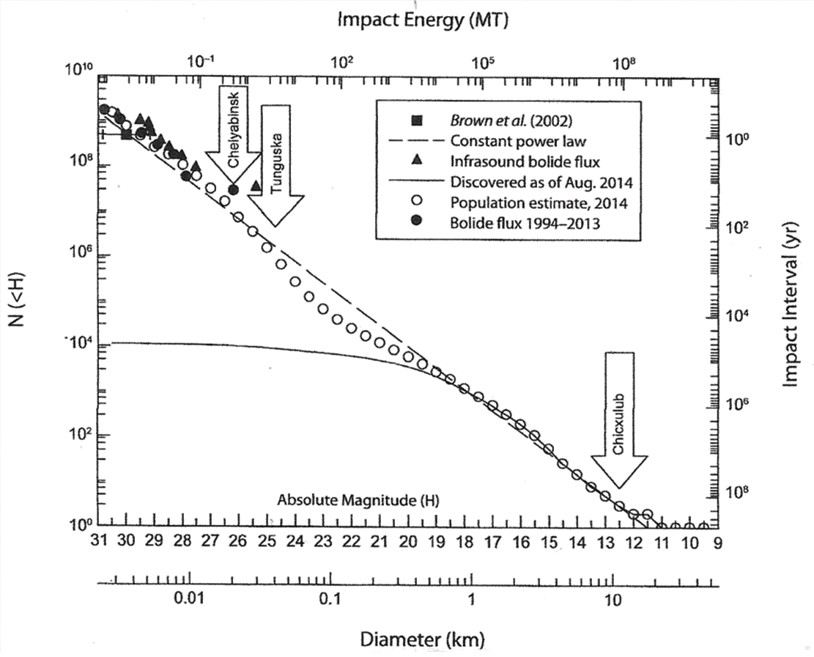The frequency of asteroid impacts is generally related to the size of the asteroid: smaller objects strike more frequently than larger objects. Interestingly, the Earth gets showered in almost 100 tons of meteoric dust each day. Also, each day, the planet is bombarded by numerous objects the size sand grains and pebbles. Objects the size of the smallest asteroids, ~1-meter across (3 feet) strike a few times per year. The asteroid that impacted Earth over the Russian city of Chelyabinsk in 2013 was approximately 19-meters across (~62 feet); events of this size occur on average every 60-80 years. In 1908, a 50-meter (~165 feet) asteroid impacted the remote Tunguska region of Siberian Russia; an object of this size impacts on average every 200-300 years. So, you get the idea, the bigger the space rock, the less common the threat of impact. Really big asteroids, larger than 1-kilometer across (~3300 feet) are considered the most dangerous, as their impact energy is large enough to be extremely disruptive, or catastrophic for life on Earth. A 1-kilometer asteroid or comet impacts Earth, on average every 500,000 years. Asteroids or comets larger than 10-kilometers (6-miles) are potentially 'planet killing' asteroids, like the asteroid that struck ~65 million years ago killing off the dinosaurs and much of the other life forms on Earth. More info on small impacts is available on JPL's "New Map Shows Frequency of Small Asteroid Impacts, Provides Clues on Larger Asteroid Population" article.

Figure above shows observed and modeled estimates of Near-Earth asteroids as a function of size (lower axis scale). The right-side scale indicates the estimated interval between impacts in years for a given asteroid size (as read off the curved trace of the circles above the selected diameter). Impact energy, given in units of megatons TNT. from Asteroids IV, 2015, Michel, DeMeo, and Bottke (eds.), University of Arizona Press



